Switchblade Kamikaze Drone-Armed Uncrewed Fast Boat Tested
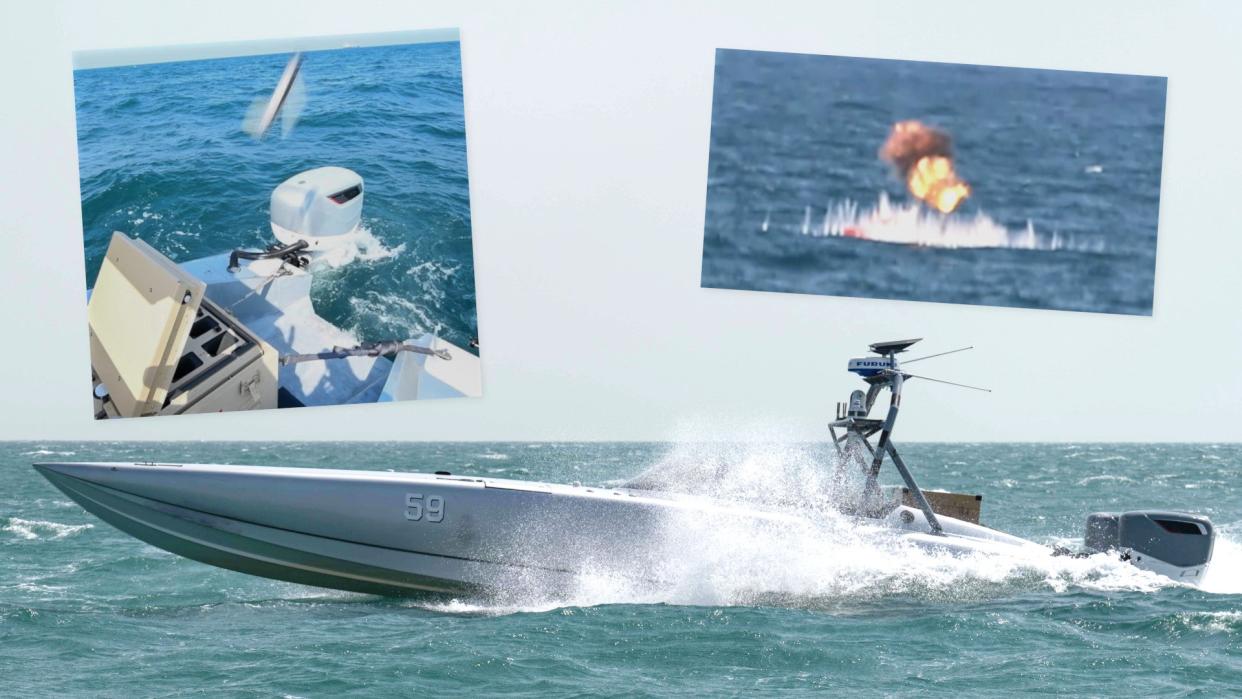
The U.S. Navy drone speedboat armed with Switchblade 300 loitering munitions was able to successfully destroy multiple mock targets at sea during a recent test. A combination like this could be useful in various contexts, including providing close-in protection against swarms of small crewed and uncrewed boats. This also underscores the Navy's interest, as well as that of the U.S. Marine Corps, in various tiers of armed drone boats capable of carrying out defensive and offensive missions.
The test involving the Switchblade-armed MARTAC Devil Ray T38 uncrewed surface vessel (USV) took place in the Persian Gulf last week. This was part of a large exercise, nicknamed Digital Talon, led by the Navy's Task Force 59. Established in 2021, Task Force 59 is a testbed unit that is tasked with experimenting with the integration of new uncrewed and artificial intelligence (AI) capabilities into day-to-day naval operations across the Middle East. It also offers the Navy a means to explore how it might operationalize those technologies more broadly.
https://twitter.com/CENTCOM/status/1720092050367094895
Special Operations Forces Central Command, the U.S. military's top special operations command in the Middle East, also helped coordinate this test. The Switchblade 300 has been in active use by American special operators for years now. It gained greater attention more recently after the U.S. military supplies examples to the Ukrainian armed forces.
For this particular test, the T38 was equipped with a small, portable six-round launcher loaded with Switchblade 300s, which the U.S. military officially calls the Lethal Miniature Aerial Missile System (LMAMS). Whether or not any special modifications were made to the drone boat to enable it to employ these munitions is unclear. Pictures and video from the test do show that the USV was equipped with what appears to be a SpaceX Starlink satellite communications antenna, as well as a small commercial navigation radar and electro-optical/infrared camera turrets.
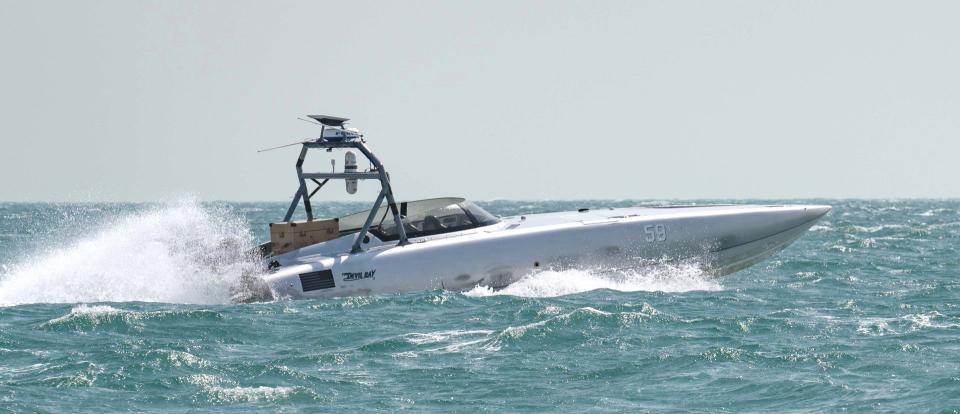
Personnel assigned to Task Force 59 at a facility ashore both controlled the T38 during the test and executed the Switchblade attacks.
The Switchblade is a small loitering munition, a type of weapon also often referred to as a kamikaze drone, and has a four-pound high-explosive warhead. It has a maximum range of up to 10 kilometers (just over six miles) away and can stay aloft for around 15 minutes.
https://twitter.com/aerovironment/status/1684263336970682368
A camera in the nose allows the operator to see what the drone sees right up until the movement of impact. The drone can navigate to a specified area or engage a designated target, even one that's moving, autonomously. However, the human at the controls can make course corrections and even wave off an attack entirely for any reason, including due to the sudden appearance of innocent bystanders in the target area. You can read more about the Switchblade 300's capabilities in this past War Zone feature.
The T38 is a 38-foot uncrewed speedboat powered by two outboard diesel motors. Depending on its configuration, MARTAC says the drone boat can reach a top speed of up to 80 knots and cruise at between 25 and 50 knots. It has a maximum range of 800 and 1,200 nautical miles.
https://www.youtube.com/watch?v=Lo29ED3qlGc
The T38 presents the middle tier of MARTAC's Devil Ray line, all of which can be controlled via line-of-sight and/or satellite datalinks. The company's drone boats have a certain degree of autonomous capability, including the ability to navigate from one location to another using specified waypoints. MARTAC also says its Devil Ray USVs can readily accept a variety of third-party sensors and armament options.
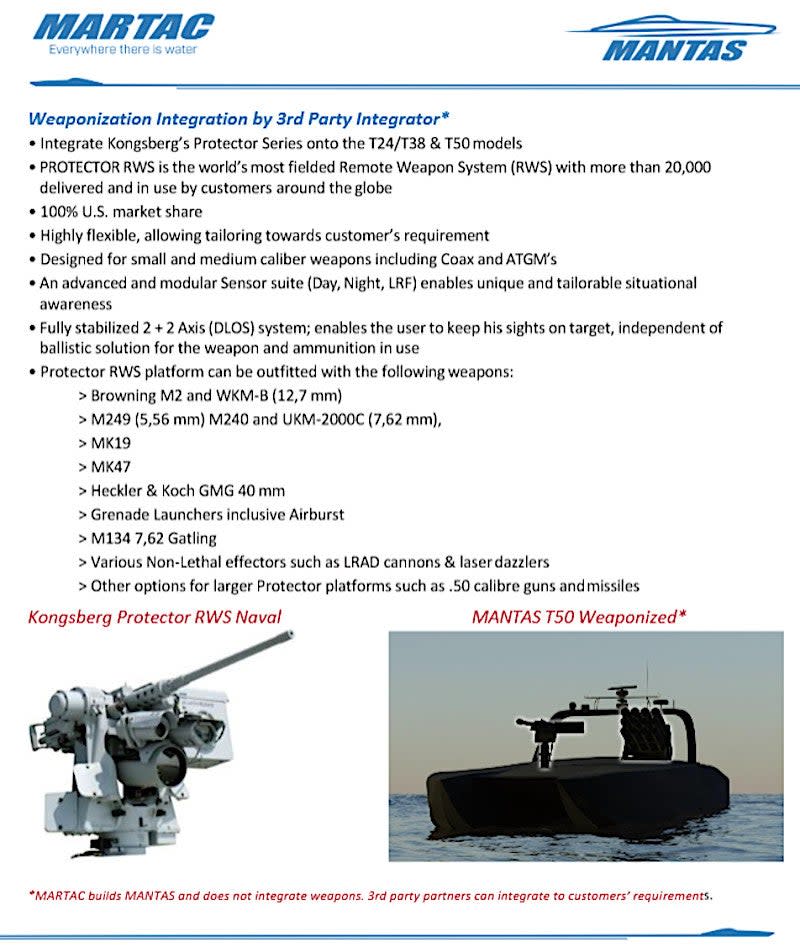
The Navy is presenting the Switchblade-armed T38 very much as a proof of concept, but there potential use cases even for this particular combination. One that immediately springs to mind would be to use drone boats loaded with loitering munition to help defend against incoming swarms of small boats, including uncrewed ones.
The danger posed to ships and infrastructure ashore, including port facilities and bridges, by explosive-laden uncrewed kamikaze boats is well established. This is a capability that Iranian-backed Houthi militants in Yemen helped bring into the mainstream years ago and that has only come into its own even more in the course of the current conflict in Ukraine.
https://www.youtube.com/watch?v=X65YEYoClxo https://www.youtube.com/watch?v=VeqszwkqhSo
Though the Switchblade 300 has a small warhead, it would still be enough to blow up an incoming kamikaze boat's propulsion system or destroy it entirely by triggering a secondary detonation of its payload.
In a force protection role, a loitering munition-armed speedboat would have the benefit of being able to respond quickly, including to threats that might suddenly emerge, and then engage them with a high degree of precision. Multi-round launchers would offer a platform like this a deeper magazine capacity to engage higher volumes of targets.
Drone boats armed with Switchblade 300s could be used to attack other targets at sea and on land. Without a crew of their own, the armed USVs could get closer to their objective with lower risk than a crewed platform, helping to make up for the Switchblade 300's relatively short range and endurance. Despite its small warhead, a flurry of Switchblade 300s might still be capable of achieving a mission kill on a larger target, such as an enemy warship, but focusing on destroying key systems like radars and communications arrays. The loitering munitions could be particularly threatening to maritime targets in narrow confined littoral areas.
The test last week does just demonstrate the potential value of pairing USVs with kamikaze drones, in general, too. The Marine Corps, in cooperation with the Navy, is already pursuing a different type of small USV armed with Hero-120 loitering munitions, which larger and are more capable in all respects than the Switchblade 300, as you can read more about here. That program also reflects growing interest across the U.S. military, as well as other armed forces around the world, in multiple tiers of surface and air-launched loitering munitions.
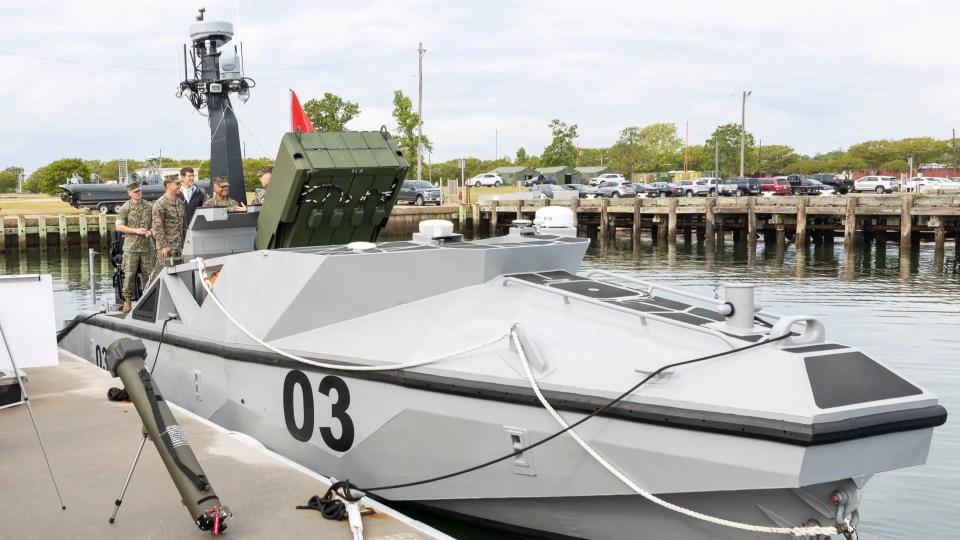
The Navy has also shown clear interest in the past, including through actual testing, in the ability to launch swarms of loitering munitions and other drones from both surface vessels and submarines. It has also been exploring arming USVs of various sizes with other offensive and defensive weaponry. This includes a test in 2021 involving a large USV equipped with a containerized launcher able to fire SM-6 and Tomahawk missiles.
https://twitter.com/DeptofDefense/status/1433852377870839808
If nothing else, Task Force 59 continues to spearhead Navy efforts to integrate uncrewed boats, as well as aerial drones and uncrewed underwater vessels, into routine operations of various kinds. The Middle East certainly presents opportunities to test these kinds of capabilities in very real and potentially serious operational contexts.
The Navy did stress that last week's Switchblade-armed drone boat demonstration was the product of a long planning process and is not directly related to the ongoing Israel-Gaza conflict or other current events in the region. At the same time, in its release about the Digital Talon exercise, the Navy specifically highlighted the fact that Task Force 59 had used its USVs and other uncrewed platforms to monitor potentially malign Iranian naval activity in the region just earlier this year.
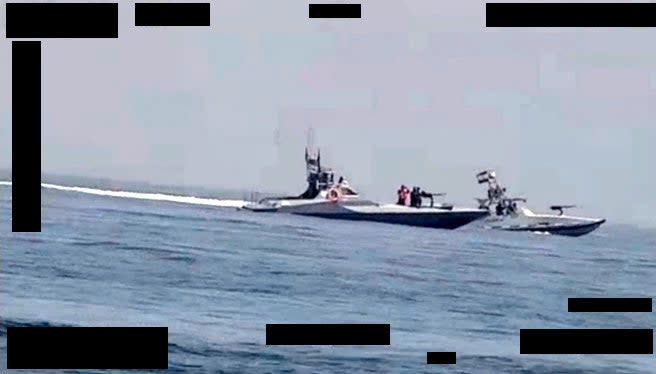
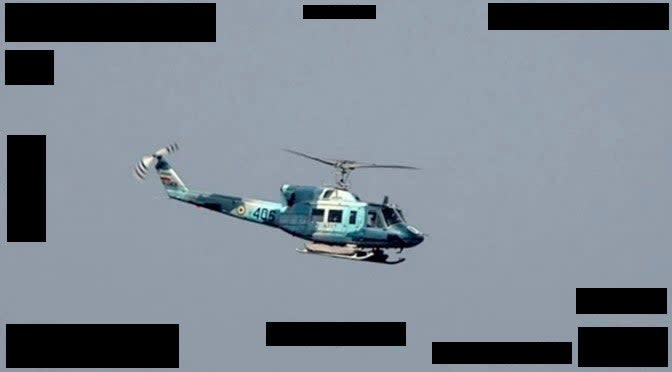
The unit's drone boats have also been helping escort larger warships, including as they transit the often volatile and highly strategic Strait of Hormuz linking the Persian Gulf and the Gulf of Oman. Iran routinely harasses U.S. naval vessels and commercial ships in and around this area, a route through which much of the world's oil and natural gas supplies flow, and often threatens to blockade it in response to actions taken by the United States and other opponents.
In fact, Iranian forces have temporarily seized or attempted to seize drones belonging to Task Force 59 in the past, underscoring the very real operational nature of the unit's ostensibly experimental work.
https://www.youtube.com/watch?v=417vEblGm1o https://www.youtube.com/watch?v=QpJBro6FXXM
The Navy's interest in USVs and other uncrewed capabilities, of course, extends well beyond the Middle East. Drone boats with loitering munitions and other capabilities that Task Force 59 is testing and evaluating now could be very applicable in other contexts, including a potential high-end conflict in the Pacific against China.
Altogether, the T38 firing Switchblade 300s against mock naval targets in the Persian Gulf last week is a sign of capabilities that look set to become more and more commonplace in Navy operations worldwide.
Contact the author: joe@thedrive.com

